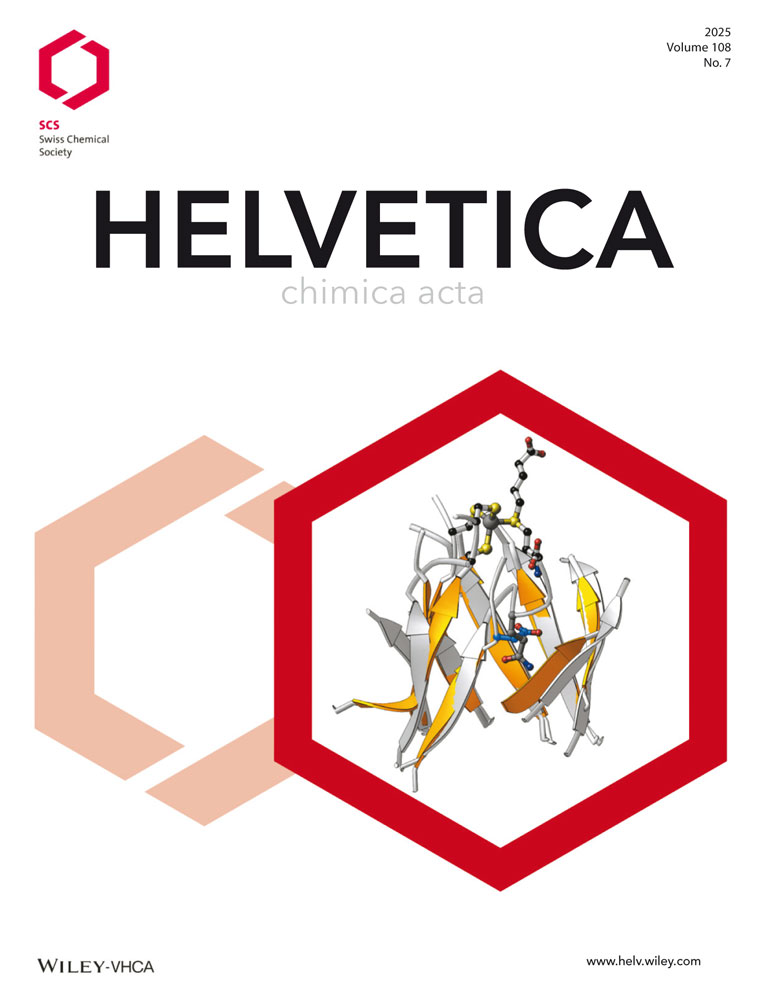The Effect of Ring Size on Reactivity: The Diagnostic Value of ‘Rate Profiles’
Eric Masson
Institut des Sciences et Ingénierie Chimiques, Ecole Polytechnique Fédérale, BCH, CH-1015 Lausanne
Search for more papers by this authorFrédéric Leroux
Laboratoire de Stéréochimie associé au CNRS (UMR CNRS 7509), Université Louis Pasteur (ECPM), 25 rue Becquerel, F-67087 Strasbourg Cedex 2
Search for more papers by this authorEric Masson
Institut des Sciences et Ingénierie Chimiques, Ecole Polytechnique Fédérale, BCH, CH-1015 Lausanne
Search for more papers by this authorFrédéric Leroux
Laboratoire de Stéréochimie associé au CNRS (UMR CNRS 7509), Université Louis Pasteur (ECPM), 25 rue Becquerel, F-67087 Strasbourg Cedex 2
Search for more papers by this authorAbstract
The rates of cycloalkyl phenyl sulfide formation of a series of homologous bromocycloalkanes upon treatment with sodium benzenethiolate have been determined to ascertain the effect of ring size on reactivity. The ‘rate profile’, i.e., reaction rate vs. ring size, for these nucleophilic substitutions (SN2) was determined. A linear free-energy relationship could be derived from computed hydride affinities of cycloalkanes and rates of typical SN1 reactions, whereas rates of SN2 reactions exhibited a strong discrepancy from the seven- up to the twelve-membered rings. This discrepancy was rationalized by a careful examination of the geometry of the intermediates and transition states involved in these reactions.
References
- 1 H. C. Brown, R. S. Fletcher, R. B. Johannesen, J. Am. Chem. Soc. 1951, 73, 212.
- 2 H. C. Brown, G. Ham, J. Am. Chem. Soc. 1956, 78, 2735.
- 3 H. C. Brown, M. Borkowski, J. Am. Chem. Soc. 1952, 74, 1894.
- 4 J. Sicher, Progr. Stereochem. 1962, 3, 202.
- 5 L. Schotsmans, P. J. C. Fierens, T. Verlie, Bull. Soc. Chim. Belg. 1959, 68, 580.
- 6 J. Sicher, J. Jonás, M. Svoboda, O. Knessl, Collect. Czech. Chem. Commun. 1958, 23, 2141.
- 7 J. O. Edwards, R. G. Pearson, J. Am. Chem. Soc. 1962, 84, 16.
- 8 A. J. Parker, Chem. Rev. 1969, 69, 1.
- 9 J. L. M. Abboud, M. Herreros, R. Notario, J. S. Lomas, J. Mareda, P. Müller, J. C. Rossier, J. Org. Chem. 1999, 64, 6401.
- 10 J. L. M. Abboud, I. Alkorta, J. Z. Davalos, P. Müller, E. Quintanilla, J. C. Rossier, J. Org. Chem. 2003, 68, 3786.
- 11
H. M. Rosenstock, K. Draxl, B. W. Steiner, J. J. Herron, J. Phys. Chem. Ref. Data Suppl. 1977, 6, 1.
10.1063/1.555547 Google Scholar
- 12 F. P. Lossing, J. L. Holmes, J. Am. Chem. Soc. 1984, 106, 6917.
- 13 J. Zavada, J. Krupicka, J. Sicher, Collect. Czech. Chem. Commun. 1968, 33, 1393.
- 14 H. C. Brown, K. Ichikawa, Tetrahedron 1957, 1, 221.
- 15 M. Havel, J. Krupička, M. Svoboda, J. Závada, J. Sicher, Collect. Czech. Chem. Commun. 1968, 33, 1429.
- 16 A. Stein, C. W. Lehmann, P. Luger, J. Am. Chem. Soc. 1992, 114, 7684.
- 17 S. Yamamoto, M. Nakata, T. Fukuyama, K. Kuchitsu, J. Phys. Chem. 1985, 89, 3298.
- 18 F. A. L. Anet, J. Am. Chem. Soc. 1985, 107, 4335.
- 19 J. G. Aston, M. L. Sagenkahn, G. J. Szasz, G. W. Moessen, H. F. Zuhr, J. Am. Chem. Soc. 1944, 66, 1171.
- 20 E. L. Eliel, R. G. Haber, J. Am. Chem. Soc. 1959, 81, 1249.
- 21 C. Bobbio, M. Schlosser, Eur. J. Org. Chem. 2001, 4533.
- 22 M. Schlosser, M. Marull, Eur. J. Org. Chem. 2003, 1569.
- 23 F. Leroux, T. U. Hutschenreuter, C. Charrière, R. Scopelliti, R. W. Hartmann, Helv. Chim. Acta 2003, 86, 2671.
- 24 J. Závada, J. Krupicka, J. Sicher, Collect. Czech. Chem. Commun. 1963, 28, 1664.
- 25 S. Matsubara, H. Matsuda, T. Hamatani, M. Schlosser, Tetrahedron 1988, 44, 2855.
- 26 W. E. Truce, K. R. Hollister, L. B. Lindy, J. E. Parr, J. Org. Chem. 1968, 33, 43.
- 27 G. Szeimies, A. Schlosser, F. Philipp, P. Dietz, W. Mickler, Chem. Ber. 1978, 111, 1922.
- 28 M. Ortiz, G. L. Larson, Synth. Commun. 1982, 12, 43.
- 29 J. L. Kice, J. D. Campbell, J. Org. Chem. 1967, 32, 1631.
- 30 G. Rabilloud, Bull. Soc. Chim. Fr. 1967, 384.
- 31 M. G. Cabiddu, S. Cabiddu, E. Cadoni, R. Cannas, C. Fattuoni, S. Melis, Tetrahedron 1998, 54, 14095.
- 32 V. N. Ipatieff, B. S. Friedman, J. Am. Chem. Soc. 1939, 61, 684.
- 33 C. Møller, M. S. Plesset, Phys. Rev. 1934, 46, 618.
- 34 M. Head-Gordon, J. A. Pople, M. J. Frisch, Chem. Phys. Lett. 1988, 153, 503.
- 35 M. J. Frisch, M. Head-Gordon, J. A. Pople, Chem. Phys. Lett. 1990, 166, 281.
- 36 M. J. Frisch, M. Head-Gordon, J. A. Pople, Chem. Phys. Lett. 1990, 166, 275.
- 37 M. W. Schmidt, K. K. Baldridge, J. A. Boatz, S. T. Elbert, M. S. Gordon, J. H. Jensen, S. Koseki, N. Matsunaga, K. A. Nguyen, S. J. Su, T. L. Windus, M. Dupuis, J. A. Montgomery, J. Comput. Chem. 1993, 14, 1347.
- 38 W. J. Hehre, L. Radom, P. V. R. Schleyer, J. A. Pople, ‘Ab Initio Molecular Orbital Theory’, J. Wiley & Sons, New York, 1986.




